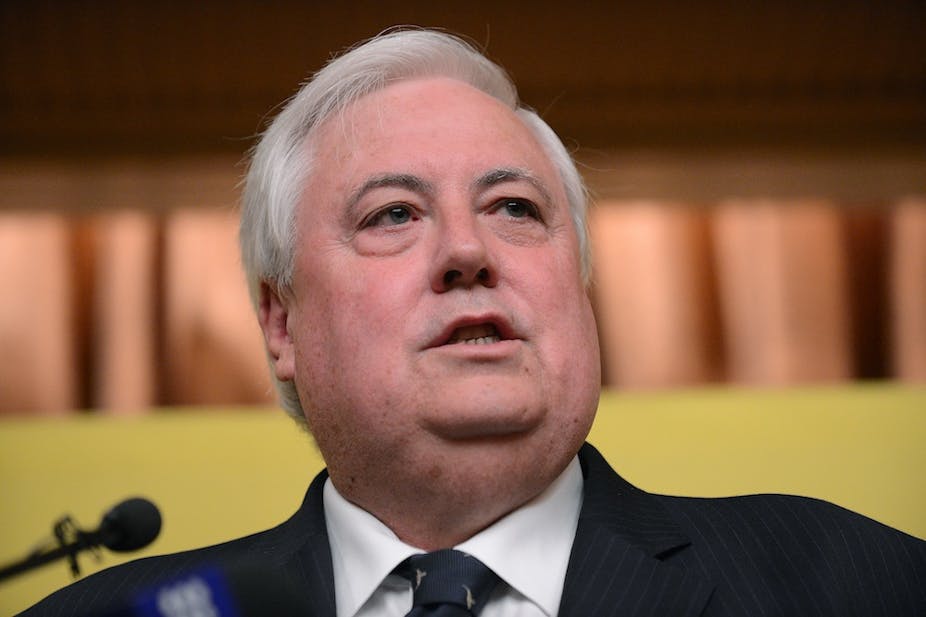Tony Abbott was today sworn in as Australia’s 28th prime minister. The election results, however, are yet to be formally declared, with some controversy surrounding the counting of votes in the electorate of Fairfax.
There were some interesting and unusual results, especially in the Senate where a new crop of minor parties appear likely to enter the chamber on July 1 next year. But it was mining magnate Clive Palmer, who contested the seat of Fairfax, who has raised serious questions about the integrity of the voting process. In doing so, he has highlighted how effectively many intricate components work together to produce clear and legitimate electoral results in Australia.
As the count has progressed in the seat of Fairfax, Palmer’s majority has dipped to just three votes at the time of writing on Wednesday afternoon. During what is a very close contest, Palmer has requested a recount of the votes in Fairfax as he believed there was tampering of the ballots and discrepancies with the count.
Palmer has also reportedly suggested the election was “rigged”. So what are the processes that are used to decide electoral contests and how are close elections resolved?
Governing the system
The electoral process in Australia is governed by the Commonwealth Electoral Act (1918), and a range of significant reforms were made to the electoral process during the Hawke Labor government’s first term.
One significant reform was the introduction of the Group Ticket Vote (GTV) for the Senate. This implemented the black line on the Senate ballot paper and gave voters the option of placing a “1” for their favourite party above the line, or vote for each candidate below the line. Not withstanding debates about the transparency about preference deals, this reform has increased the rate of the formal vote for the Senate.
The reforms also introduced the “Inclusive Gregory Method” for counting votes for the Senate, which ensures that all ballots are now counted rather than using the old system of random sampling to decide electoral contests.
Perhaps the most important feature of the 1984 reforms was the establishment of the Australian Electoral Commission (AEC) as a statutory authority which is responsible for the conduct of federal elections.
Notions of fairness are enhanced by the fact that the AEC has upheld its impartial and non-partisan approach to managing the electoral roll and the running of elections. This is in contrast to the approach used in the United States, for example, which does not have such an entity overseeing elections.
Past close elections
The AEC is required to undertake a recount for a lower house district if the difference at the end of the count between the two leading candidates is 100 votes or fewer. There is also scope for candidates to order a recount but only if they have evidence of specific cases of errors.
In 2007, the AEC undertook a recount of more than 100,000 ballot papers in the seat of McEwen after the incumbent MP, Liberal Fran Bailey, claimed some papers were missing or not accepted as valid. At that stage Bailey appeared to have lost the seat to Labor’s Rob Mitchell by just six votes.
As part of the recount, the validity of over 600 ballot papers came into question with the AEC upholding the principle of maximising franchise which ultimately resulted in Bailey’s re-election. Mitchell appealed the decision to the High Court of Australia in its capacity as the Court of Disputed Returns, which referred it to the Federal Court - which finally upheld Bailey’s win, over 200 days after polling day itself.
Close elections in 2013
There were some very close results at this election. In a high profile case in the Victorian seat of Indi, for example, the incumbent Sophie Mirabella was in a tight race with independent Cathy McGowan. But Mirabella, having accepted the count to be fair, has conceded defeat to her opponent.
If the margin between Clive Palmer and his LNP opponent Ted O'Brien continues to be fewer than 100 votes, the AEC will undertake a recount. Recent history suggests that the current systems in place will see the rightful candidate elected to parliament.

